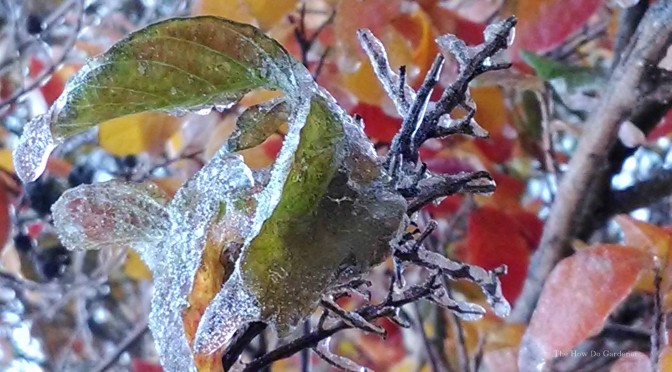The most important factor in determining when to plant any vegetable in your garden is the “LAST FROST DATE” in the spring, and the “FIRST FROST DATE” in the fall for your area. These dates for a given area are based on historical weather data from that area collected over a 30 year period and compiled by the National Climatic Data Center from over 5,800 Weather Monitoring Stations throughout the United States.
FREEZE vs. FROST
For each Weather Monitoring Station, a FREEZE DAY is any day in the year that the temperature reaches 32°F or below. A FROST DAY is any day in the year that the temperature reaches 36°F or below.
So why worry about FROST DAYS more so than FREEZE DAYS? Well, a Freeze is what will kill many plants. But, Weather Monitoring Stations are typically mounted four to six feet above the ground. During clear, calm, and cold nights the temperature at ground level, where your garden is, can become much colder and even freeze. So we’re just trying to play it a little safer by focusing on FROST days.
SPRING
In the spring, as temperatures start to warm, the LAST day of the year that a FREEZE DAY occurs is considered the LAST FREEZE DATE for that year. As the temperatures continue to warm, although no more FREEZE DAYS may occur, the LAST day of the year that a FROST DAY occurs is considered the LAST FROST DATE for that year. Usually about a week or two after the LAST FREEZE DATE.
The LAST FROST DATE for your area is the day of the year, based on these 30 year averages, that there is only a 10% chance that there will be a FROST on that day. So, at least statistically, you should be safe to plant ON or AFTER this date.
FALL
In the fall, as temperatures start to cool, the FIRST day of the year that a FROST DAY occurs is considered the FIRST FROST DATE for that year. As the temperatures continue to cool, usually about a week or two later, the FIRST FREEZE DAY of the year will occur.
The FIRST FROST DATE for your area is the day of the year, based on these 30 year averages, that there is a 90% chance that there will be a FROST on that date. So again, at least statistically, you will want to have completed your harvest ON or BEFORE this day.
REMEMBER
Remember, although statistically accurate, you are really just playing the odds with these dates. It’s kind of like going to Las Vegas, but instead of gambling with your money, you put your tomato plants up on the blackjack table. (Editors Note: For your own safety, DO NOT attempt this in any gaming establishment.) Before planting you should ALWAYS check your local weather to see if a frost or freeze is in the forecast.
NEW AND IMPROVED
The National Climatic Data Center has recently released an entirely new data set, this one collected between 1981 and 2010. With this data, we’ve created a new and improved way for finding the FREEZE and FROST DATES for your specific area.
Enter your 5-DIGIT ZIP CODE in the calculator, then click on the FIND IT button. The FREEZE and FROST DATES for your area will then be displayed in the RESULTS section. If you want to look up another location, Click the RESET button, and start over.
I hope you find this information helpful, and I wish you Happy (freeze damage free) Planting.
Data Source: National Climatic Data Center


